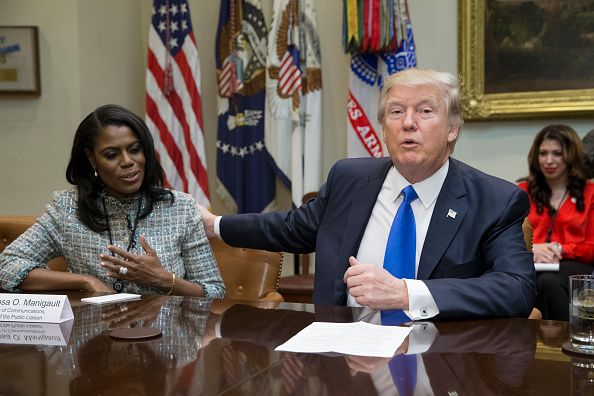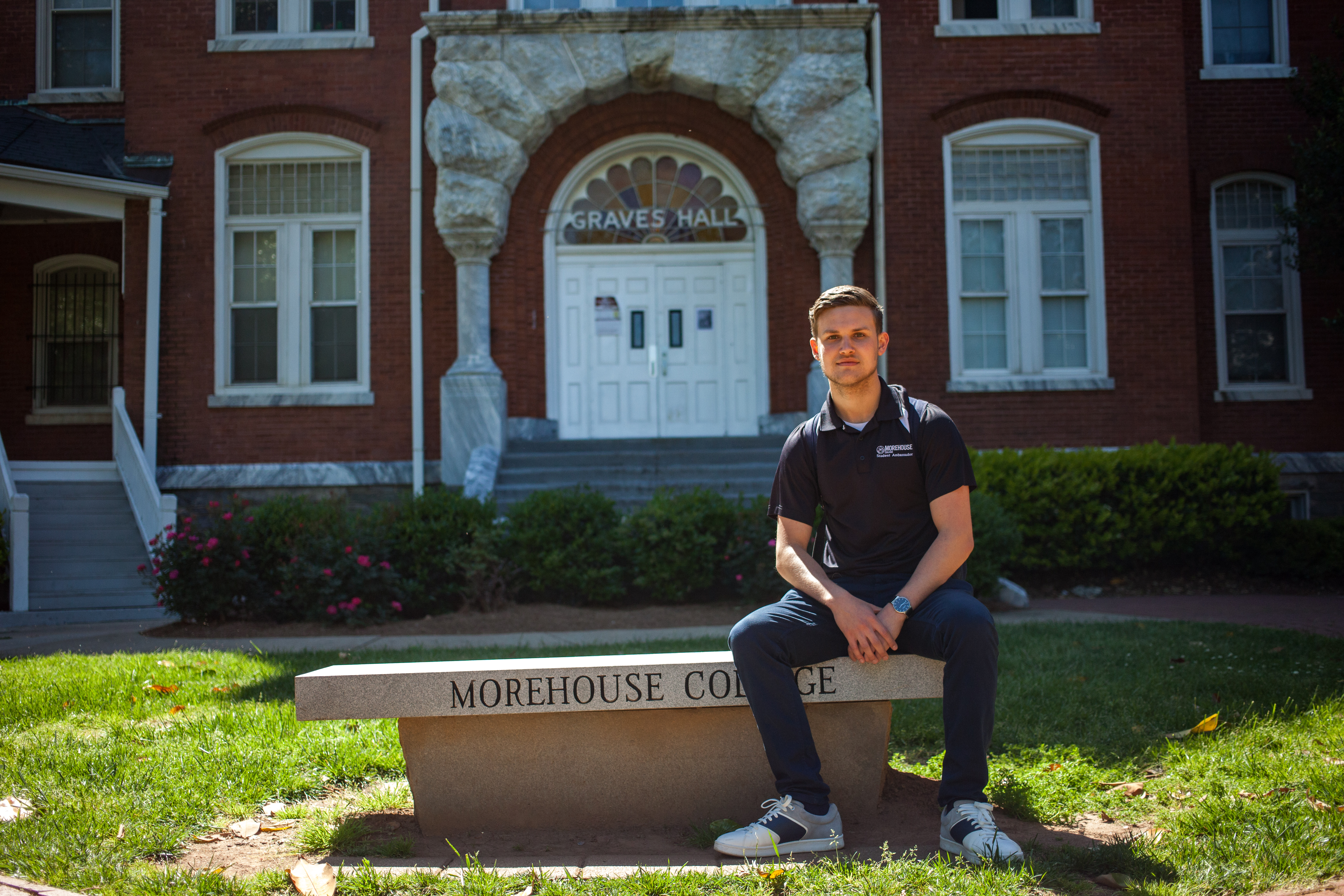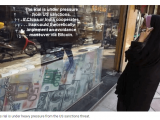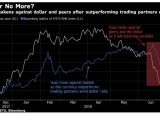
Inside the Lives of White Students at Historically Black Colleges
June 27, 2018On her first visit to West Virginia State University a decade ago, Leisha Salyer, who is white, did not even realize WVSU was a historically black college. On an average weekday, the school of 3,800 bustles with white commuter students who are West Virginia residents—65 percent of the total student body is white, though most of the 500 residential students are black.
When WVSU awarded Salyer a volleyball scholarship, she was unaware she was on the verge of a college experience that would become a racial fairytale of sorts. She didn’t know much about HBCUs at all. There was only one black kid in her high school class, and his adoptive parents were white. “And you only see black people in the media portrayed so negatively,” Salyer told me. “State changed my outlook, totally, my whole outlook on everything, and I know that’s really a massive thing to say.”
Initially, she fell in love with the small-town feel of the tree-shaded campus in Institute, West Virginia. On the second visit, however, someone mentioned WVSU’s history. Founded in 1891 as the West Virginia Colored Institute, the school was among the segregated public institutions that opened in the South during in the late 19th century to serve black students, who were then legally barred from attending other schools. Name changes would follow to fit the times. Eventually, West Virginia State College became West Virginia State University in 2004. You’ve probably heard of the school if you saw Hidden Figures, which tells the story of Katherine Coleman Goble Johnson, a mathematician and 1937 graduate of the school whose brilliant calculations of orbital mechanics as a NASA employee were behind the success of the first US manned space flights.
“I thought that it was really cool that my school actually had a history.” Sayler said.
When she shared the school’s story with her parents—Trump-loving Republicans—the scholarship was not enough to conquer fears about their daughter’s choice.
“Are you sure you want to go there and be a part of that?” she remembers her mother asking.
“Yes!” Sayler answered emphatically.
“They were so nervous about it,” she told me. “Then they came to campus to see me play. It was so funny because everyone was so nice to them and they would be like, ‘They’re just so polite. Everyone here is so polite.’ So it was kind of a great learning experience for them just to see a whole other culture and to see how it is around me and how they took care of me. My family and I just love it. It was just a learning curve for them for sure.”
Salyer, who spent three years coaching volleyball at WVSU after graduating in 2012, said she easily introduced her parents to her black boyfriend at WVSU, and they love the African American man she married two years ago. Yet she still has not told them that she did not vote for Trump, much less that she voted for Obama in both 2008 and 2012.
HBCUs were once the only choice for many black college students, but even though that’s no longer true they remain pillars of black culture. Since desegregation, many have viewed them as spaces that spare black students from the racial tensions that plague predominantly white institutions. But today they are also home, almost paradoxically, to a growing number of white students. The change is most dramatic at Bluefield State University, another HBCU in West Virginia, that is now 93 percent white. For both Bluefield and WVSU, attracting whites has been a matter of survival, given the rapid decline of the state’s black population in the wake of the collapse of coal mining. Today only 3.6 percent of the state’s residents are black, according to the most recent Census estimates. (The presence of white students at HBCUs in other southern states is no longer rare, but they are far behind West Virginia schools in enrolling white students.)
“The African American population in this country is going to be flat as far as graduation rates,” said Anthony Jenkins, the president of WVSU. “So if you have historically white and historically black institutions fighting for this small pool of African American students, you have to recruit other students from other ethnic and multicultural backgrounds.”
Proximity and affordable tuition attracted Gail Prichard to WSVU in the 70s, when white students became a majority. “I know that there are many students who come to WVSU just like I did,” Pritchard, who is from nearby Dunbar, said. "It's all about the education, and seizing the opportunity… and I seized it. And I turned it into something. I am West Virginia State Yellow Jacket, black and gold all the way.”
Pritchard, who was the first in her family to attend college when she became a commuter student in 1976, graduated with degrees in business and marketing and climbed the ladder of the banking world for 25 years in Charleston, West Virginia, before switching careers. A member of WVSU’s board of governors, she is now chairwoman of the Charleston Area Medical Foundation and credits WVSU professors for her professional growth. “I still remember him. Dr. Sanders Anderson,” she told me of one of her mentors. “He had a talk with me and said, ‘You have to keep going with your education.’ He rang in my head to get my masters degree. He still rings in my head! I also remember him because it was in the 70s, and he had this big afro. Huge. Mrs. Odessa Farmer was my business writing professor. She taught me how to set up a letter, and I still use her tips and the way she told me to do it and I've quoted her with young fellow employees or people working for me. I've said, ‘Listen, Mrs. Farmer would not like the way you structured this letter.’”
“The second comedian looked right at me and said, ‘Hey, you’re a white girl, are you scared right now?’"
WVSU’s diversity doesn’t mean that it’s shed the racial baggage that is inescapable in America. Self-segregation lives through what some describe as the “white during the day and black at night” pattern embedded in WVSU's culture. That’s hardly unique at public HBCUs.
“At many of the programs at the black institutions that have white enrollment, the white enrollments are segregated pockets within the black institution,” said John Wilson, a former Morehouse College president who served as director of the Obama administration’s HBCU initiative. “They are clustered in programs or in sports teams.”
Leisha Salyer refused to restrict herself to the white table—though it would have been easy to do so on the volleyball team. There were never more than two black girls on the squad during her four years. “We were like the white kids, the volleyball and the softball teams,” she said. “I involved myself in campus beyond athletics. I felt bad for my teammates that felt they shouldn't go to things on campus.”
Early in her freshman year, Salyer joined the two black members of the volleyball team at the homecoming comedy show and was the lone white person in the audience. “The second comedian looked right at me and said, ‘Hey, you’re a white girl, are you scared right now?’ and I said, ‘No.’ He said, ‘Are you sure? Because you might want to be.’ Everyone just laughed and I was laughing too.”
Tiago Rachelson’s everyday life at Atlanta’s Morehouse College resembles Saylor’s night at the comedy show. While the numbers of white students going to private HBCUs like Morehouse has increased, they lag far behind the numbers of non-black students at black public colleges. Rachelson was the lone white student in his freshman class. Though he won’t admit it, he appears to welcome the campus celebrity status that comes with his uniqueness. “Oh man, so many stares,” he told me, remembering his first day. “But rarely are people stereotyping me. And I made friends very quickly.”
In fact, he was elected president of Graves Hall, the historic campus building where Martin Luther King lived as a student. Rachelson also gives campus tours to prospective families. “I walk into the room and introduce myself and then say, ‘I know some of y'all are thinking like, why is the white student giving a tour? I thought I came to an HBCU. Is this the right tour?’ And then I say a little bit about my story, and how passionate I am about this school.”
The passion started when he was a freshman in high school and entered the office of his mentor, a school administrator who was his basketball coach and debate teacher. “He had this big Morehouse poster in his office,” he recalled. “One day, I asked, ‘Oh, what's this?’ We started talking about it and he told me it was the most amazing and transformative experience. And the best school in the universe. That's when I knew like, wow. When I learned about the school, the men it has produced, I decided I could not go anywhere else.”

As he described his inspiration to attend Morehouse, hints of my own past slipped into my mind. It is the fall of 1975 and I am in the foreign language office during a study hall in my junior year at Garner High School, just outside Raleigh, North Carolina. Greg Griffin, a senior applying to Morehouse, shares a brochure with me and I am hypnotized by the description of the school and the success of its alumni. In that moment I reached the same decision as Rachelson. Like him, I attended an overwhelmingly white high school—but I was a minority there, and unlike him, I was never a spectacle at Morehouse because of my race. I also did not have to endure strange remarks from high school classmates when I came home for holidays, like, “Were you bullied?” At Morehouse, I never confronted a classmate who asked in a condescending tone, "Why are you here?” But both of those things happened to Rachelson.
“I told him I wanted to be a leader,” Rachelson said of his interrogator. “I wanted to do something different, represent something much bigger than myself.”
The student responded: "Is that the answer you give everybody?"
“He was pretty much asking me as if I was a politician,” Rachelson said. “That's pretty much what he was getting at, he was like, ‘Is this some rehearsed answer you give to people?’”
I wondered the same thing. I can even hear the stump speech in 30 years, about how the president of his junior and senior class at his Miami prep school became a rare white student at Morehouse. The vision motivates my question: “Do you plan to be president one day?”
“Has it ever popped up in my brain? Yes,” he replied. “Mostly in the last two years, I've done so much research and watching YouTube videos and reading about the history and the way the government has worked and I was like, 'Oh man. Imagine if I could be president.'”
He then deflected the ambition, which makes the politician in him even more apparent. For now, he told me, he’s just focusing on his sociology major. “How can I use my privilege as a white male to benefit others in this country across the entire spectrum of sociology?” he said. “I want to be an intersectionalist, a person that is fighting all fronts: racial issues, issues of sexism, homophobia, Islamophobia, xenophobia, all the systems of oppression in America and in the world.”
Like Rachelson, Austin Woodrum—“Rowdy” to his friends—just finished his freshman year at his first-choice college, the place he also dreamed of attending throughout high school. He followed his dad’s path and attended WVSU. While Rachelson was inspired by Morehouse grads like Martin Luther King and Jeh Johnson, secretary of Homeland Security in the Obama administration, Woodrum’s hero alumnus is Earl Lloyd, who became the first black player in the NBA in 1950. “Now obviously, I'm white, but I love what it represents to walk in the place where Earl Lloyd played,” said Woodrum, who is on the basketball team. “That was huge for me. I really like what school represents and every aspect of it.”
He wasn’t old enough to vote in the 2016 election, but like several white HBCU students I spoke to (Rachelson excluded), Woodrum supports Donald Trump.
“Trump has his good and his bad,” said Woodrum. “I mean, I think everybody does. I've always said Trump’s a straight shooter. He tells you exactly what he thinks and how he thinks it he's a brilliant businessman. Financially as a country, we could use someone like that in office.”
“On one side of the cafeteria, they’re mostly the white students and on the other side you will see mostly the black kids.”
WSVU is the only HBCU with a chapter of the controversial right-wing campus organization Turning Point USA, which has caused some tension to say the least. In April, Baigen Seawell, the black student body vice president, called TPUSA a “white supremacist organization” on Twitter. The TPUSA president at the time, Callie Norton, who is white, resigned her position as a senator in the student government in protest. “I felt that my voice to hers was insignificant and not important,” Norton told me. She admitted the TPUSA chapter did not have any black members, but says the organization does not advocate racism or white supremacy. (Seawell declined to comment for this article.)
Ethan Lachau, a member of the TPUSA chapter and the baseball team, says campus political tensions are overblown. “I've never really run into someone on campus who's been outright belligerent to me because I'm a Republican," said Lachau, whose father was an alumnus. “I haven't personally run into anyone who's belittled me.”
Still, campus leaders are planning forums in the fall to try and create dialogues on campus to address ideological and racial divides.
“On one side of the cafeteria, they’re mostly the white students and on the other side you will see mostly the black kids,” said Angelica Willis, who will be a senior next year. Willis, who has a Puerto Rican mom and an African American dad, has deep ties to WVSU. Her parents met here as students in the 80s, she said, and “sixteen family members that went here prior to me, including my brother and sister.”
Willis, who was elected Miss West Virginia State for the year, plans to tackle the separation in the fall. “So that's actually my goal as Miss State, to stop the segregation and create more panels and opportunities for dialogues," she said. "A lot of people are kind of scared of what they're not comfortable with or what they're not used to.”
If you wanted to have a conversation about race in America, WVSU would be a provocative and ideal setting in many ways. “I do think that WVSU is uniquely propositioned to do things the right way, and when I say the right way, we are so overwhelmed with partisan politics in our entertainment and in our news, and its become very ugly and very divisive,” said Justin Williams, a 2006 graduate who is now a real estate investor in Washington, DC. “And I think that the combination of African American students that are from outside of the state that would typically come from places that you would consider liberal coming to a place that is overwhelmingly conservative in West Virginia and coming into contact with students that feel like they’re the ones—as rural white Americans—that are marginalized, and not being heard. Or they’re being pushed to the back because they’re Trump supporters. WVSU is uniquely propositioned to facilitate a very powerful and informal conversation between those students, the Trump supporters and the students that disagree with them, and really show the rest of the country. So if you facilitate that conversation correctly, you can really do some powerful things.”
David J. Dent, an author and associate professor at New York University, holds a joint appointment at the Arthur Carter Journalism Institute and in the Department of Social and Cultural Analysis. He is editor of the blog bushobamaamerica.com and the author of In Search of Black America. Follow him on Twitter.


